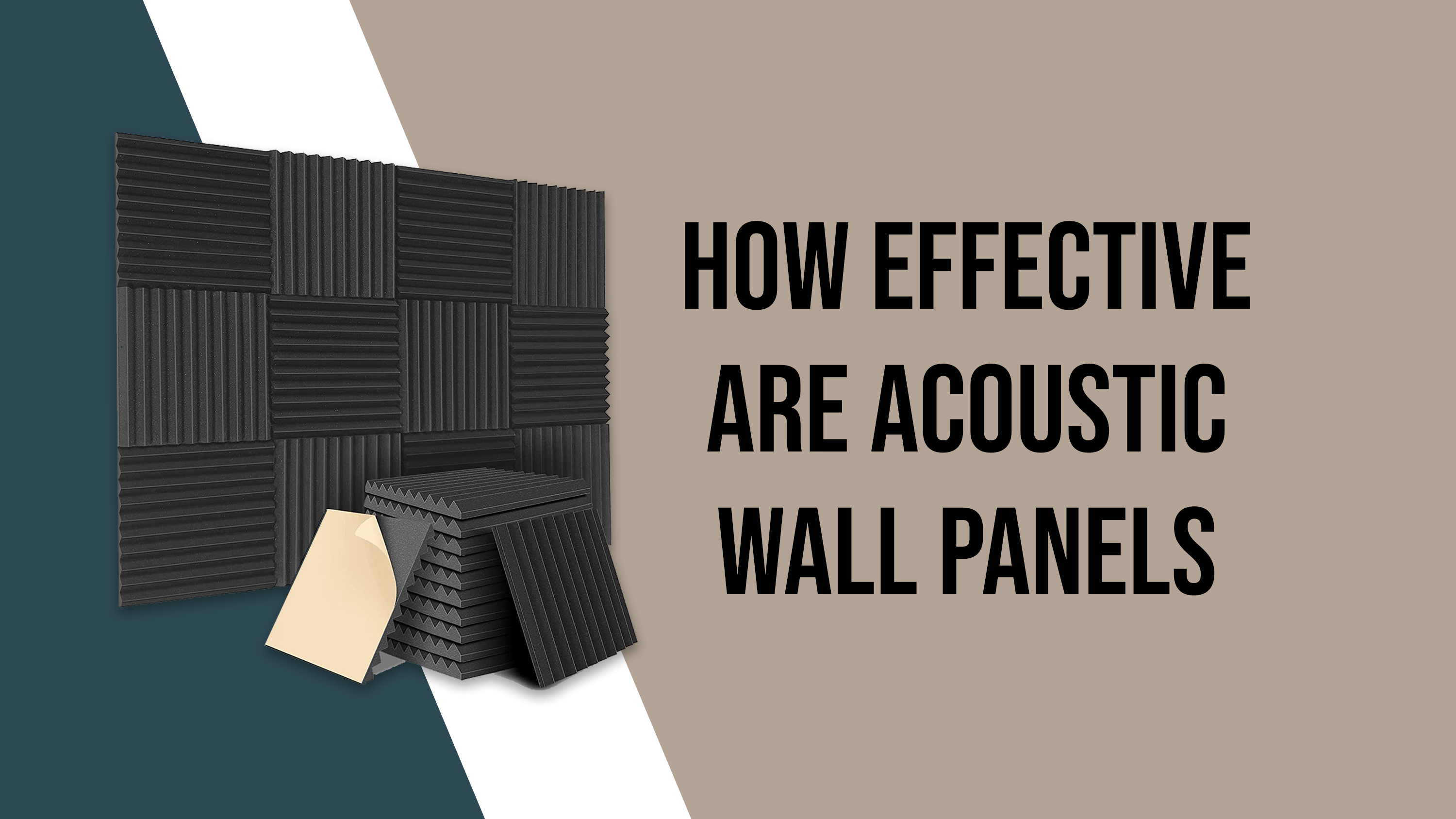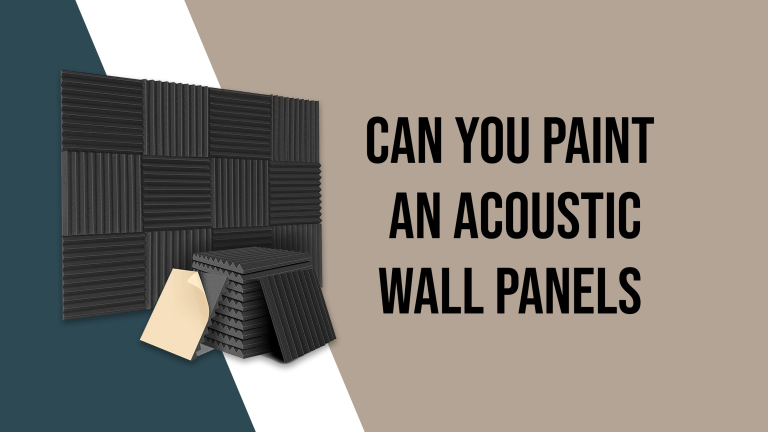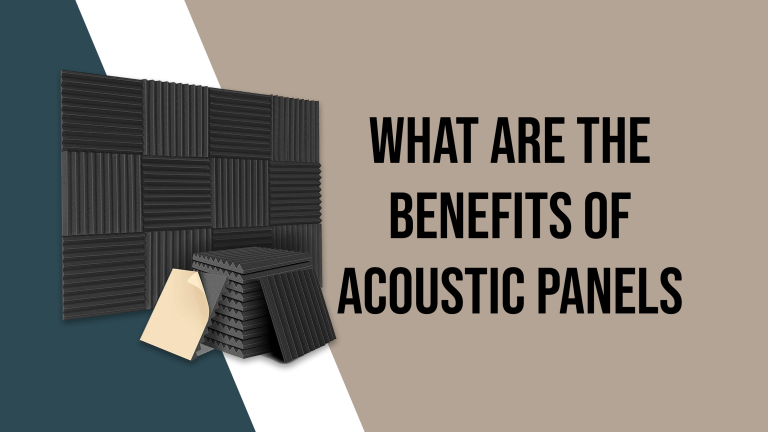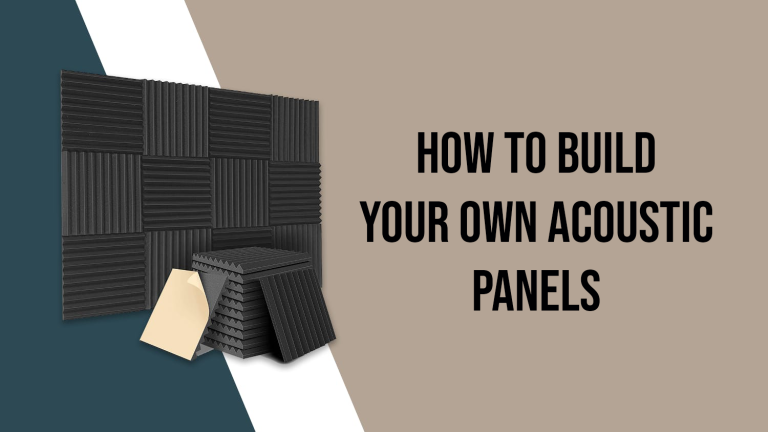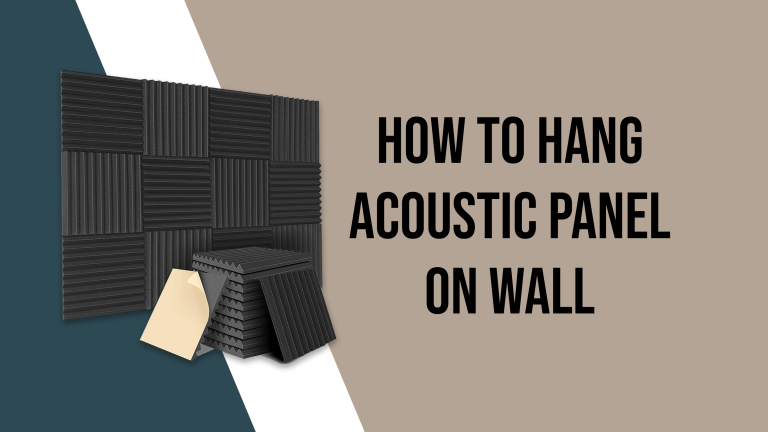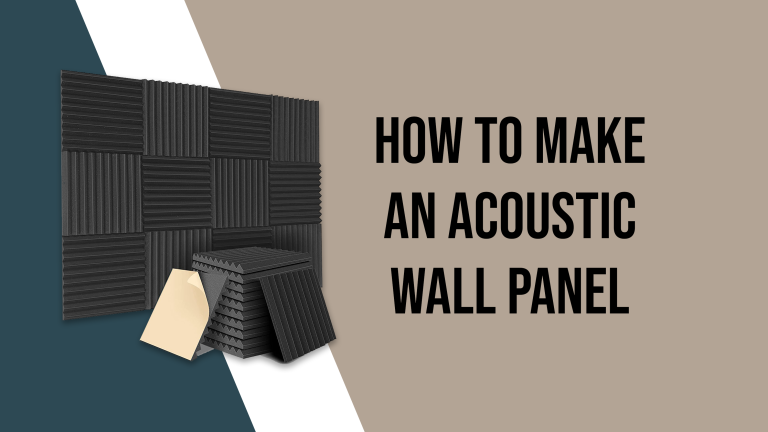How Effective Are Acoustic Wall Panels?
It’s astonishing to find hardware that can enhance your system without needing to be plugged in regarding sound quality.
You can make your own acoustic wall panel and paint them to look better.
But acoustic panels can have a practical impact. To answer your question, acoustic panels can be helpful if used properly. They work perfectly.
Continue reading to learn more about “How effective are acoustic panels?”
How Effective Are Acoustic Wall Panels?
Acoustic wall panels are effective in many ways if you use them properly. If you minimize the number of sound waves bouncing off the walls, acoustic panels enhance the sound of your current speakers. As long as they are strategically positioned, they can be compelling, even with a small number of panels.
Acoustic panels are ideal for the job, whether establishing a home theater, recording music for any purpose (such as a podcast), or attempting to find a solution to a noisy office setting.
What Is The Main Cause of Noise?
The interference of sound waves causes noise. More sound waves will travel through the air than ever before, significantly if you invested in a system with many speakers directed in various directions. The only issue is that when sound waves in the air cross each other, they impact those waves, moving and altering them.
What Causes Sound Wave Interference?
Wave crossings typically have minimal impact. After all, if you and another person are speaking simultaneously, you can still notice and understand each other’s words.
However, if you add a couple more people, it rapidly becomes difficult to understand what is being said.
Prominent speakers have many that fire at once, making it sound like one person is speaking. But when the sound waves continue to travel, they strike the walls and bounce off.
Then, when these waves are returned to space, the speakers continue to sound as if two persons are conversing at once.
The sound quickly blends with all the reflections as all the noises continue to bounce even more.
The sound waves travel backward and forth down these geometric forms before being directed into the foam itself, acting as a funnel for them. Acoustic panels work to absorb sound waves in the air after you’ve heard them, but before they can rebound off the walls when they are strategically positioned throughout your room.
This is crucial because if the acoustic waves are not controlled, they will crash into other waves and rebound across the place. Different acoustic panels are required for various.
Different acoustic panels are required for various environments.
It is not best to use the same solution in various settings when thinking about acoustic panels. The acoustician must carefully evaluate each unique setting to offer the optimal remedy.
Acoustical panels used as wall dividers
Some acoustic panels can be used as wall dividers with great success. A modest divider, for instance, is a terrific method to divide teams into open-plan offices or to conceal or house loud equipment.
Acoustically absorbent panels that stand alone are used as wall dividers. They can be covered with unusual acoustic materials, like mosses or wood.
Acoustical panels to lessen excessive noise
Numerous buildings have thin studs and partition walls separating adjacent rooms. These rooms are prone to sound transferring from one to the next, as you could guess.
Not the best situation for have a private talk with a staff member. In these situations, we advise covering the entire wall with acoustic panels because bulk alone cannot effectively block noise.
Mass-loaded panels can produce a visually striking design on your wall because they are available in various sizes and forms. These panels are fantastic because they are simple to apply, remove, and reapply, making the implementation less intrusive and influential.
Acoustic Panels for Large Places
Major manufacturing building transformations have increased recently, and many of these spaces are now being used as offices, restaurants, and shops, to name a few. These areas are lovely to look at. However, they can cause various noise problems that may be an issue for those who frequently use these areas.
Large, open areas frequently have glass walls and concrete floors for a minimalist vibe. As you can expect, the noise will rebound off such texture, which can be rather painful.
How Does an Acoustic Wall Panel Reduce Sound Waves?
Acoustic wall panel foam is used to make acoustic panels, which trap sound waves that strike them. They are typically covered in fabric to improve aesthetics, though you may come across some empty panels in settings like sound systems where aesthetics are less of a concern.
Substances like solid foam, woolen, or acoustically effective insulating substances like polyester or linen are used to make acoustic panels, which keep sound within but not outside. And you’ll note that a few of them have rough triangular forms cut into the roof if you’ve ever seen naked foam panels.
The sound waves travel backward and forth down these geometric forms before being directed into the foam itself, acting as a funnel for them. Acoustic panels work to absorb noise waves from the air after you’ve heard them, but before they have an opportunity to rebound off the walls when they are strategically positioned throughout your room.
This is crucial because if the sound waves aren’t controlled, they will crash into other waves and rebound all over the place.
How Much Area Should Be Covered By Acoustical Panel?
All sounds will be silenced if a room is completely covered in foam. The number of acoustic panels or the amount of acoustic absorption must be carefully evaluated because this may also lead to problems.
The trick is to protect the end user’s comfort and privacy without fully muzzling the sound. An acoustician is, therefore, an essential component of the described procedure.
Wrapping Up
So, it is evident that using acoustic panels to control sound waves in your environment can be pretty successful. They may ensure that your music and sound recordings are prominent or help you get the most out of that high-tech stereo speaker setup. However, there are some specifics you must get properly.
Please make sure the panels you purchase are thick enough and that you have plenty of them to protect every critical area required by your setup. After that, you might need to install a few more to ensure that the acoustics of your room is appropriately managed. Although more doesn’t necessarily equal better, acoustic panels frequently do.
In our related article, “How do Acoustic Panels Work?” you may learn more.
FAQs (Frequently Ask Questions)
- Do acoustic panels help soundproof?
Restaurants, offices, and many other locations can benefit significantly from the sound-dampening properties of acoustic panels.
- Do acoustic panels make a difference?
Every environment, whether residential or commercial, benefits from acoustic panels’ comfort and functionality. They reduce noise and improve the environment. A room’s overall sound is reduced with acoustic panels, which filter any nearby outside noises and eliminate unnecessary background noise.
- How effective is acoustic foam?
Foam doesn’t prevent the transmission of sound. To the level of the user’s hopes, even completely covering the wall with 2″ thick foam will not be able to stop the sound from passing through the wall. Since the acoustic foam is thin and let’s sound pass through, it does not act as a sound barrier.
- How long do acoustic panels last?
Acoustic foam panels will start to flake off and release dust into the air around seven years after they are made. The substance is no longer catching and converting echoes, which is harmful to your ventilating system in addition to being terrible for the material itself. Over time, the acoustic foam will deteriorate.
- Are acoustic panels the same as soundproof?
Acoustic treatment, or the management of echo and vibration in space, is the purpose of acoustic panels. In contrast, soundproofing aims to stop sounds from leaving or entering a space.
Related Articles
How Do Acoustic Wall Panels Work
What Are The Benefits of Acoustic Panels

